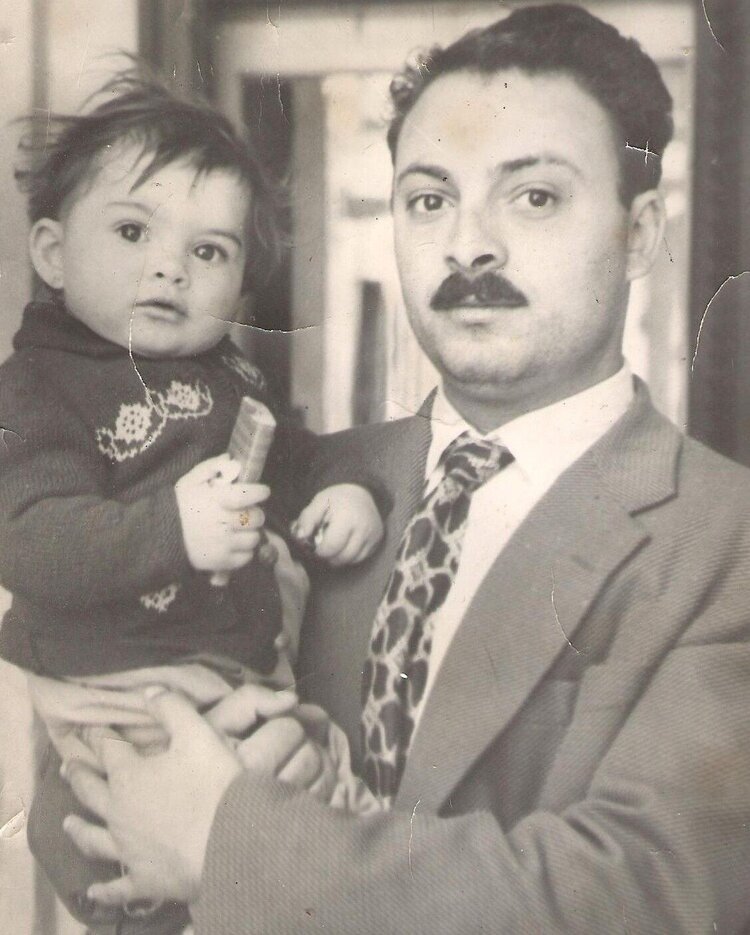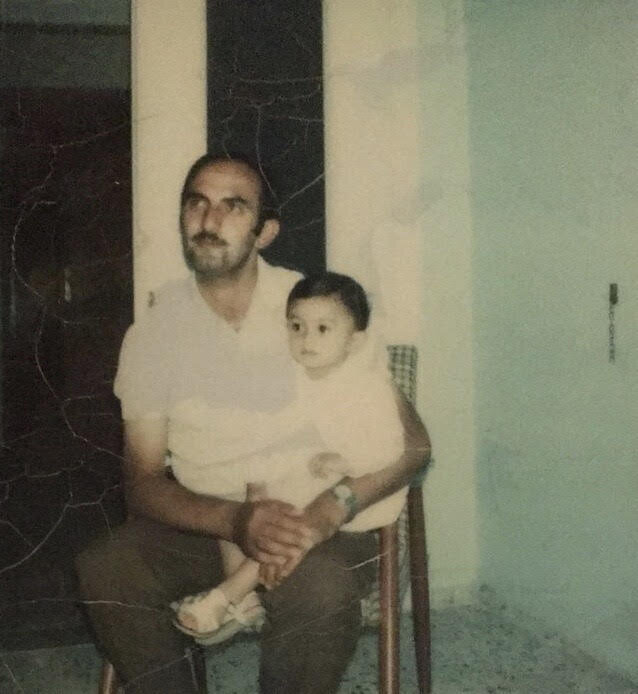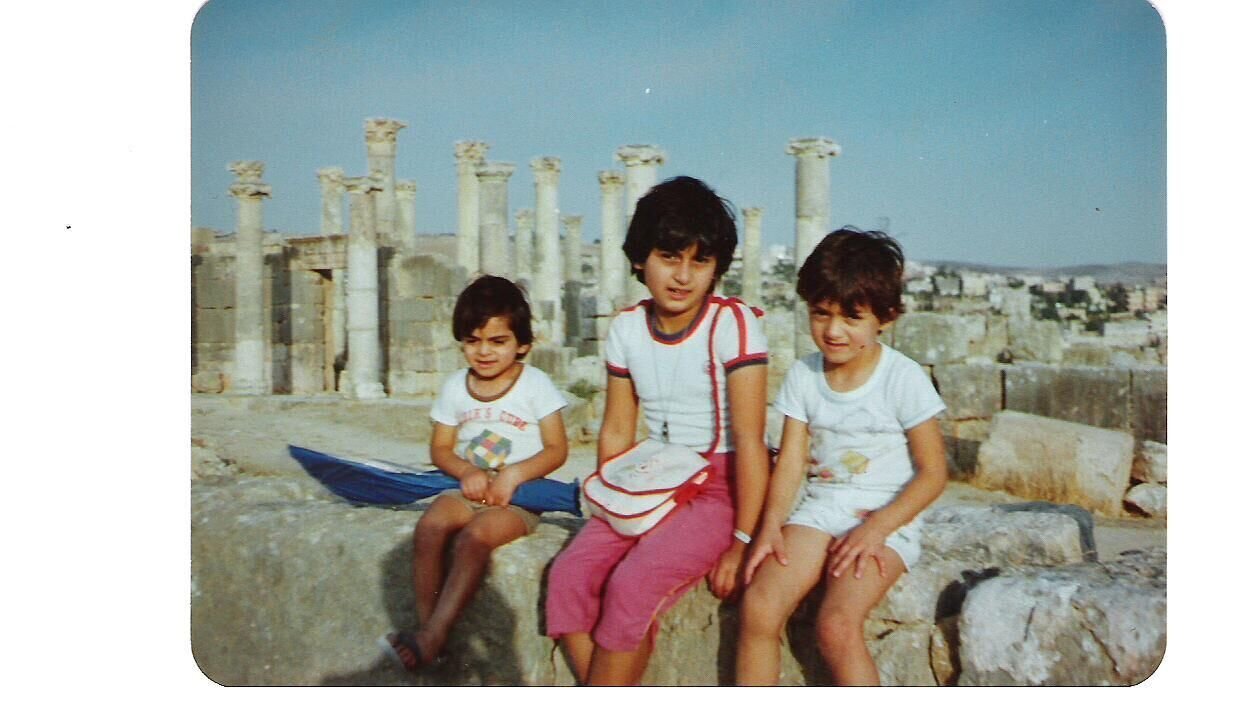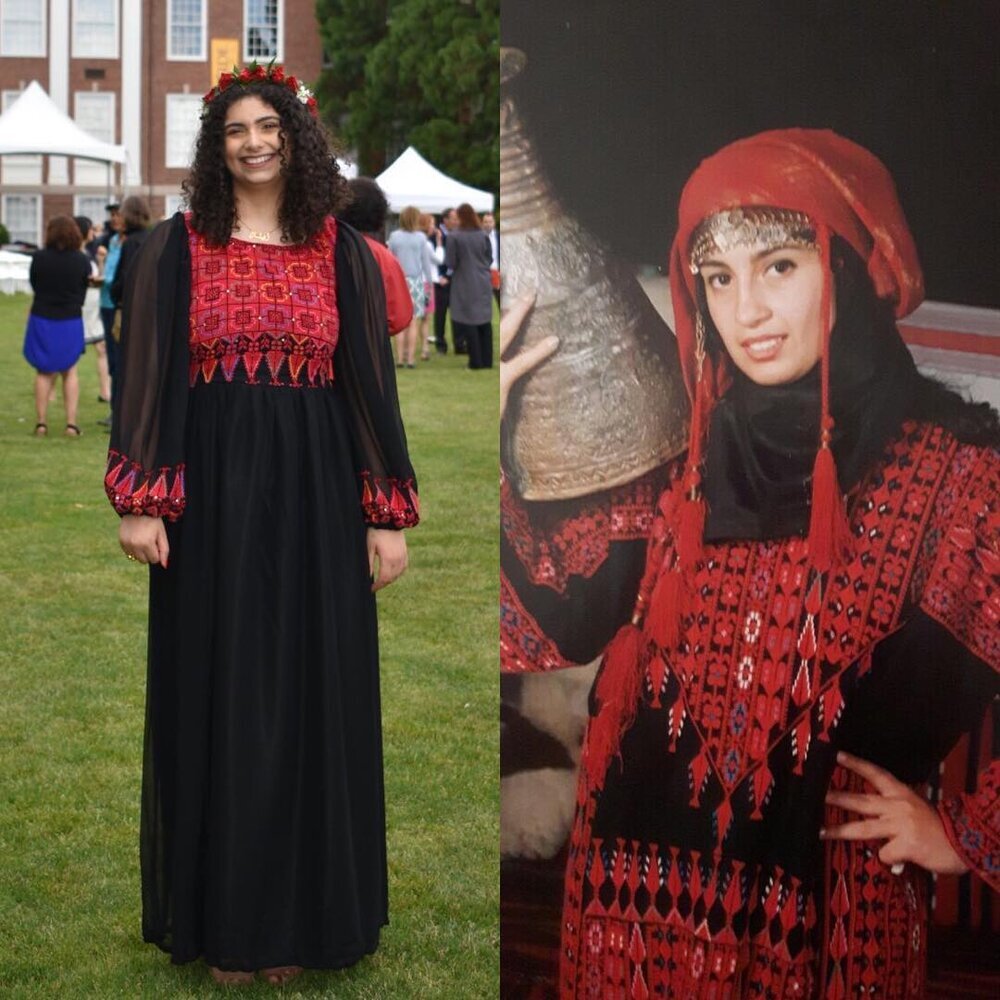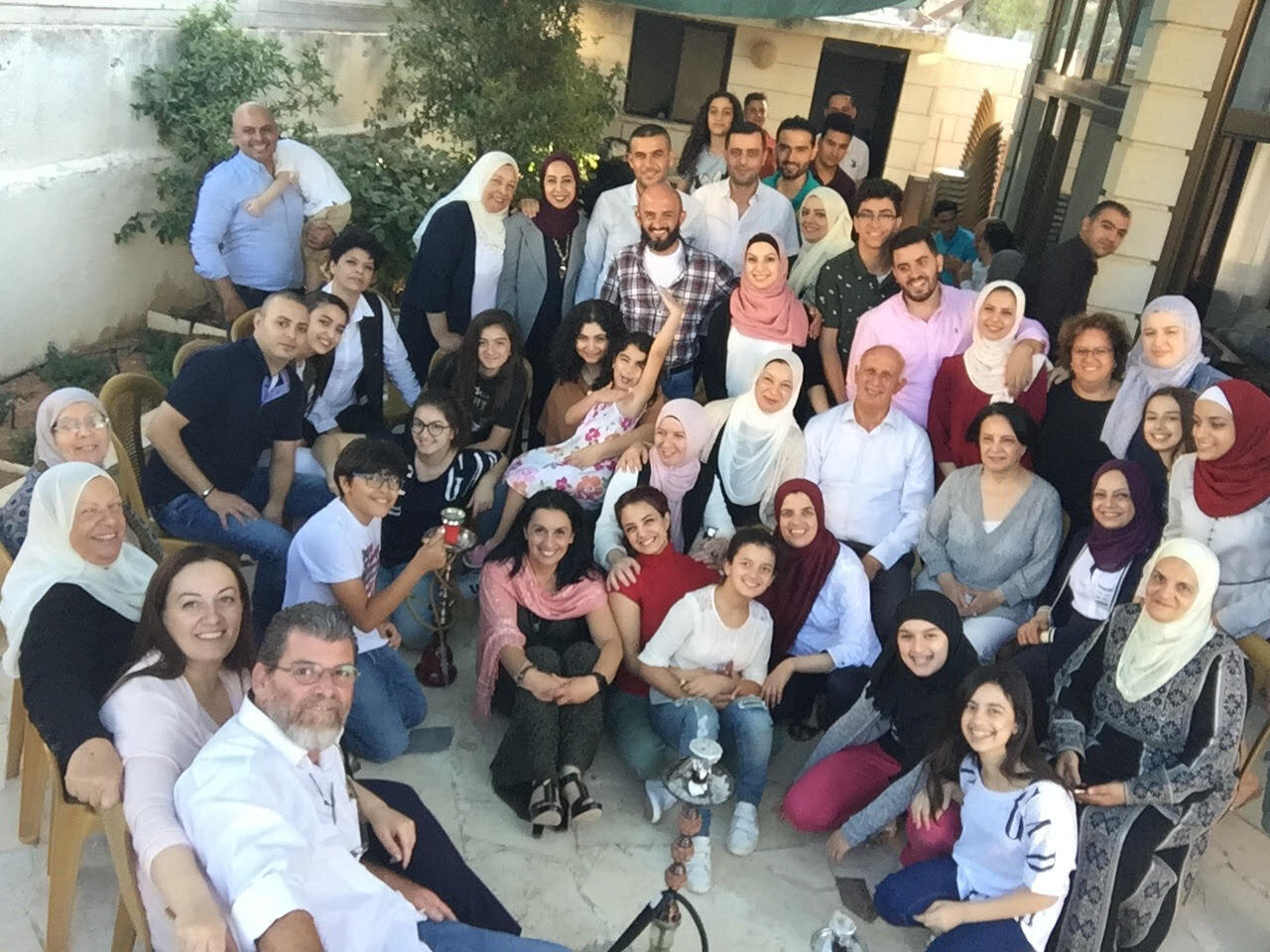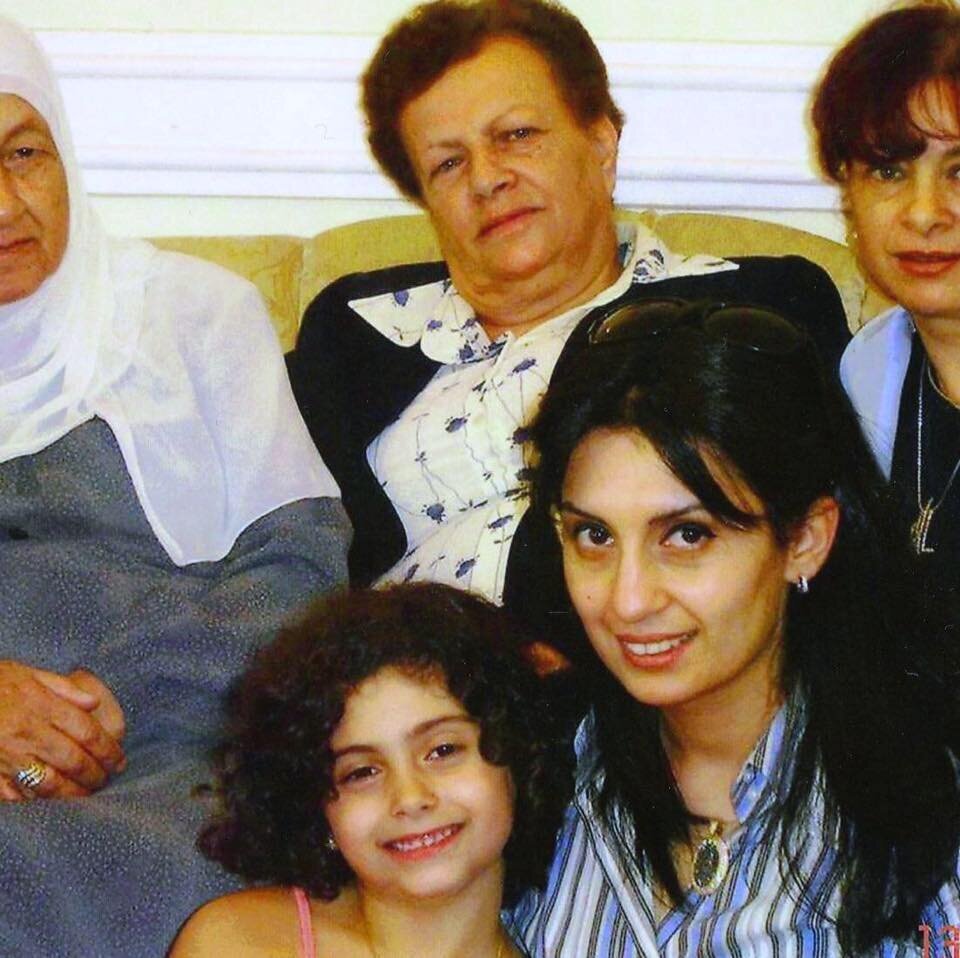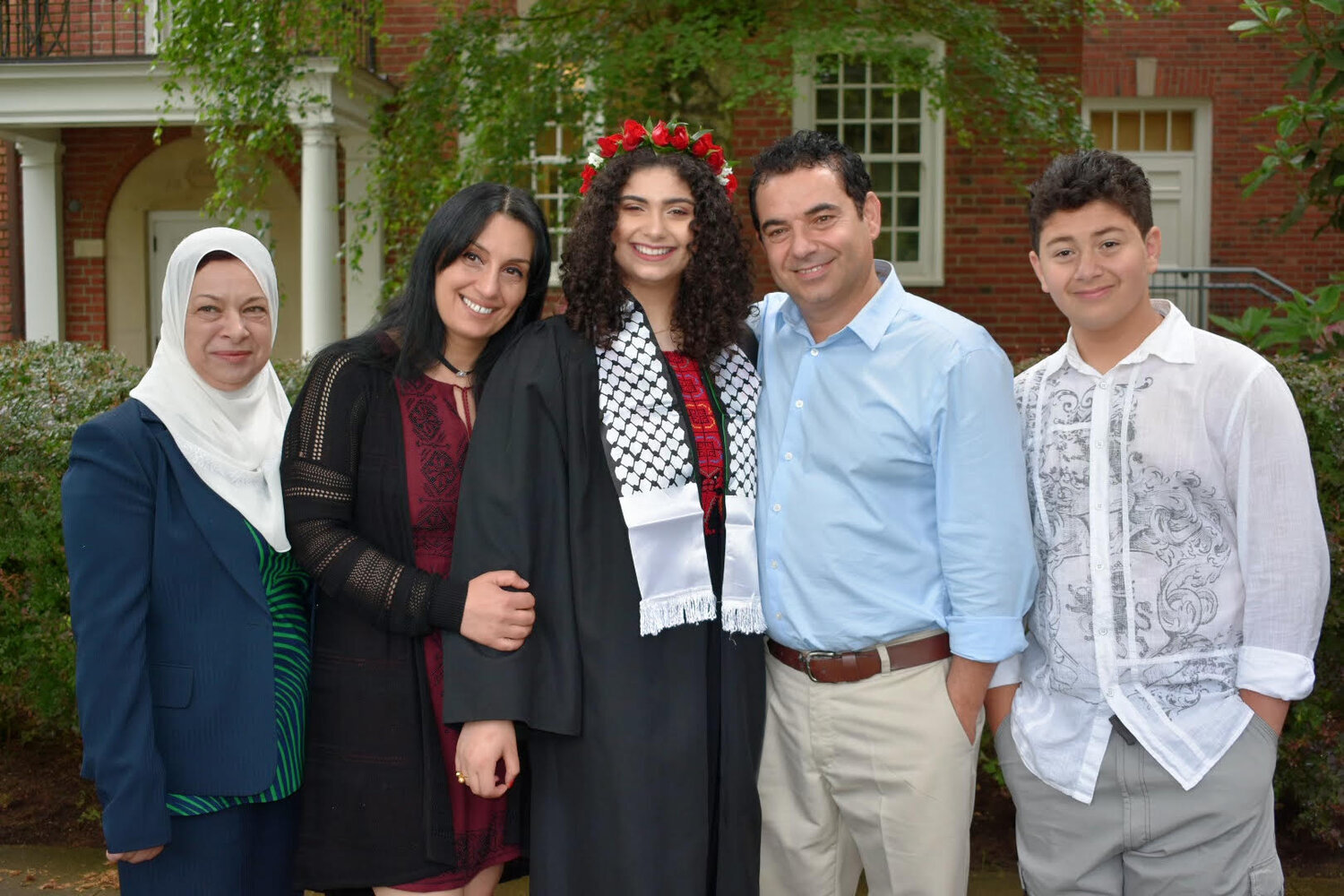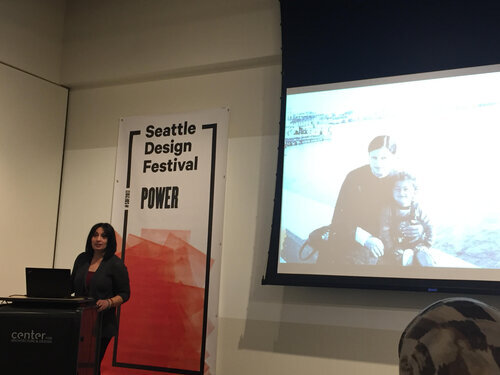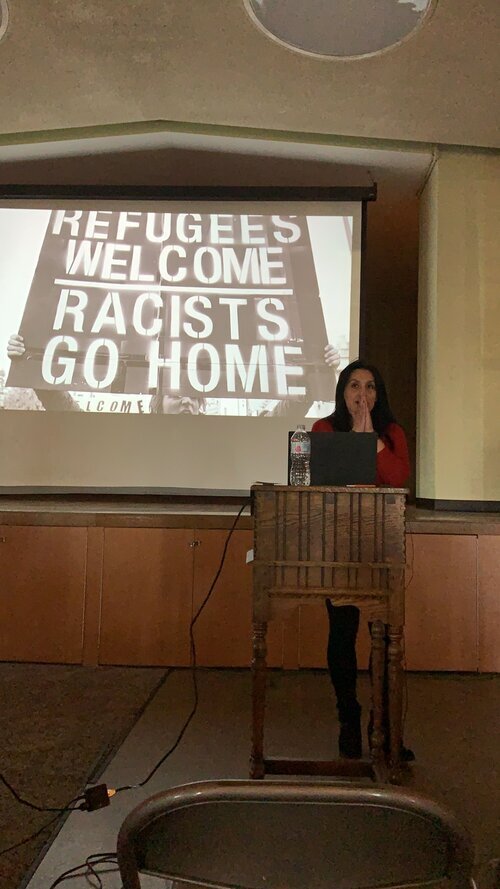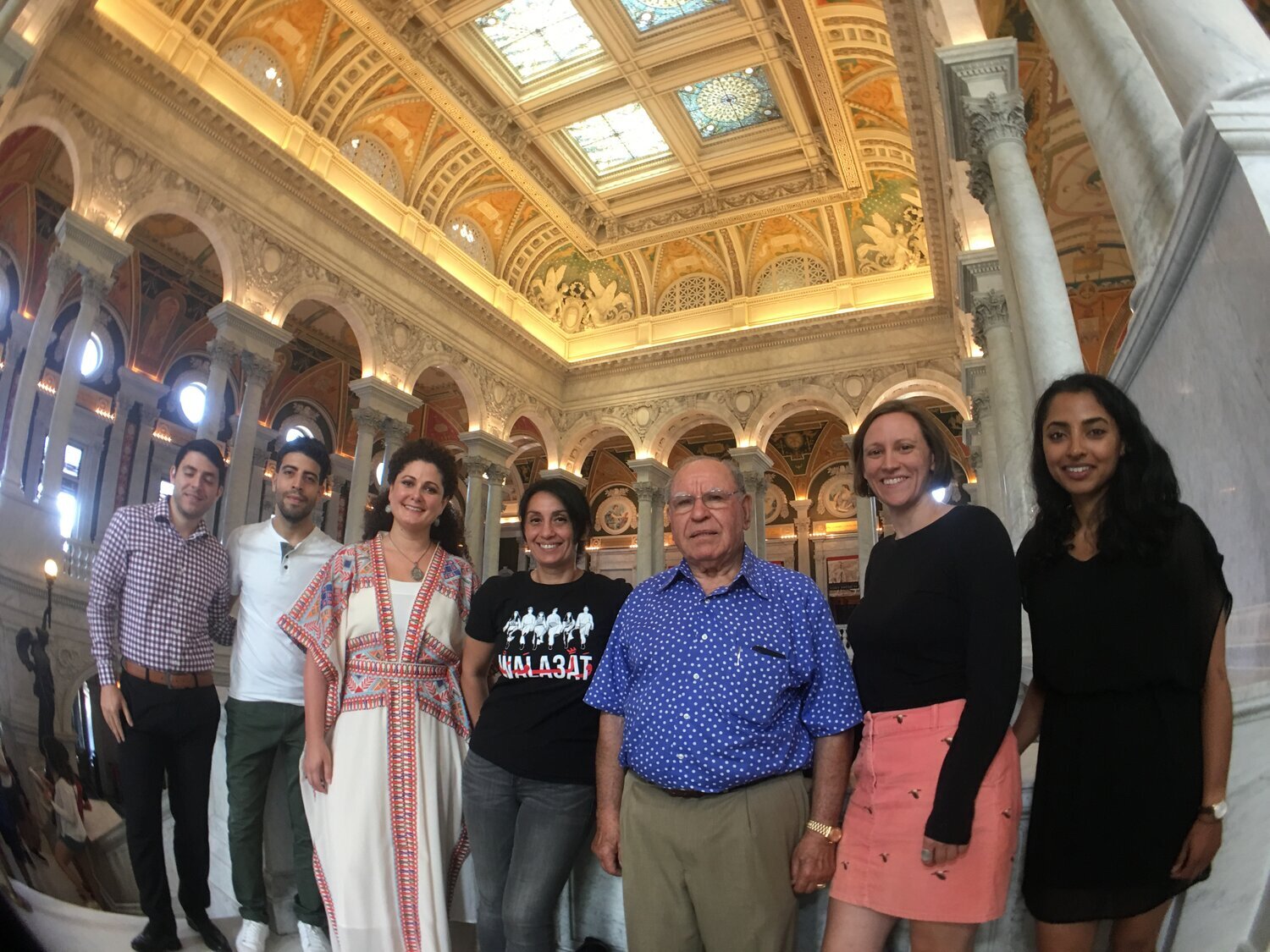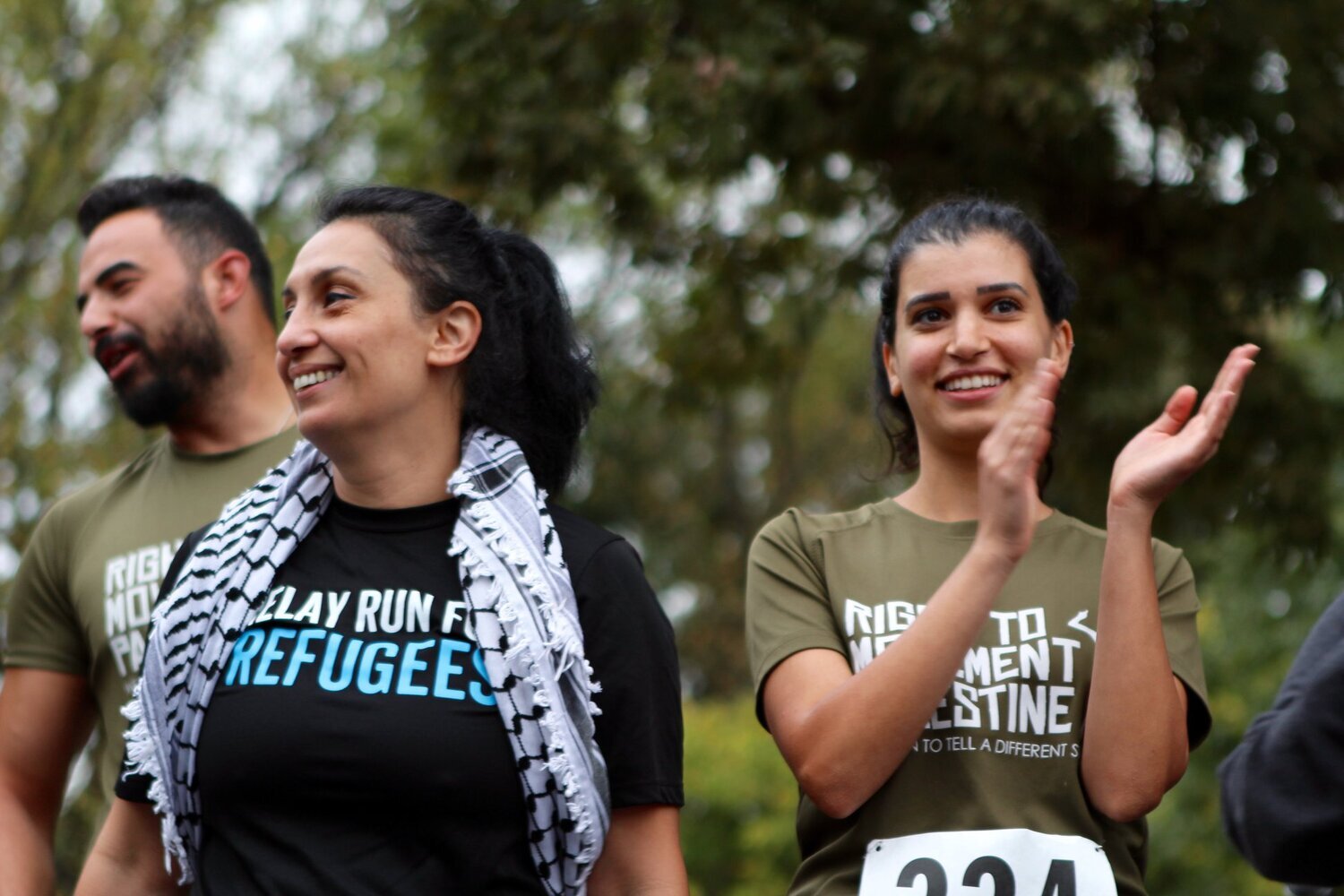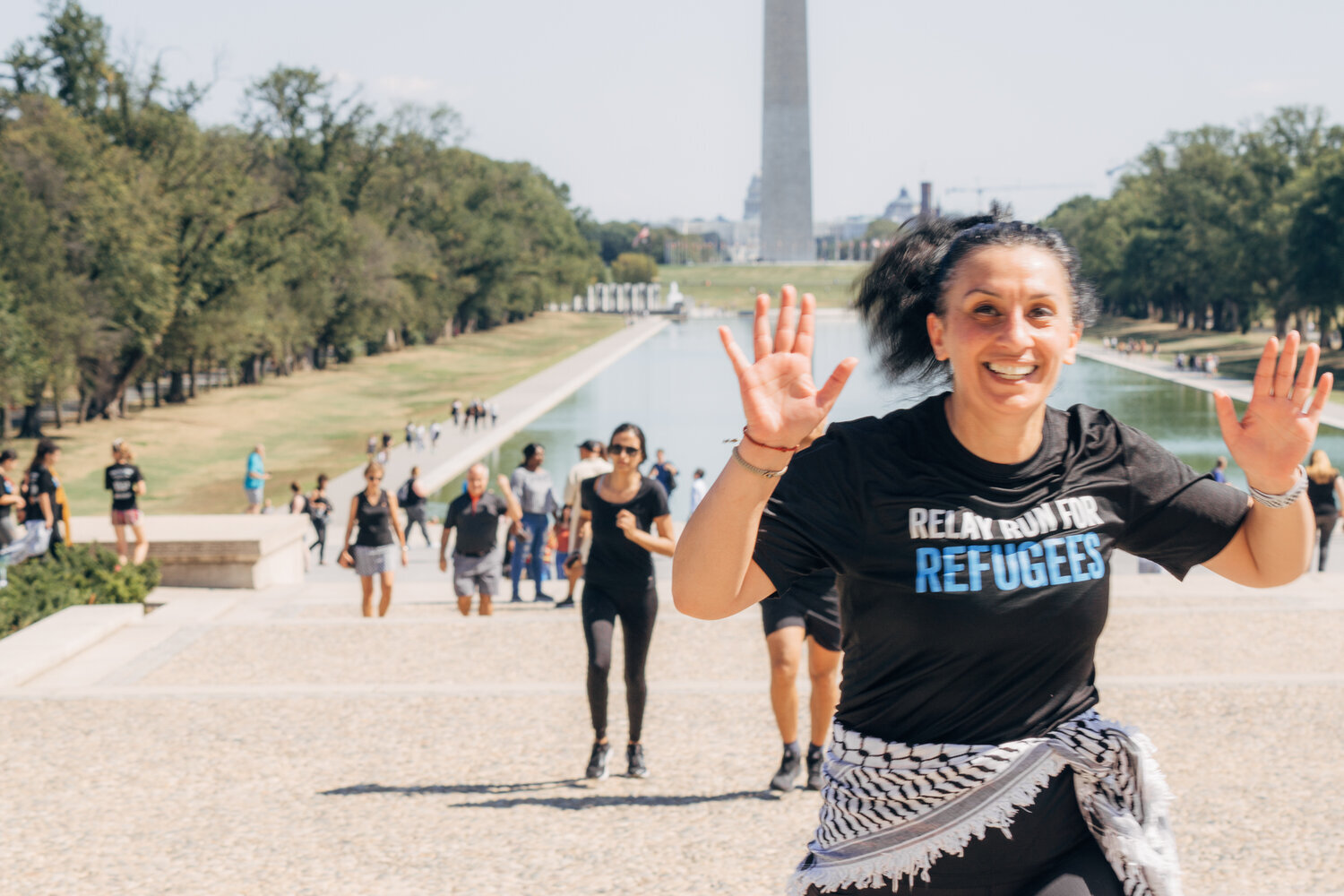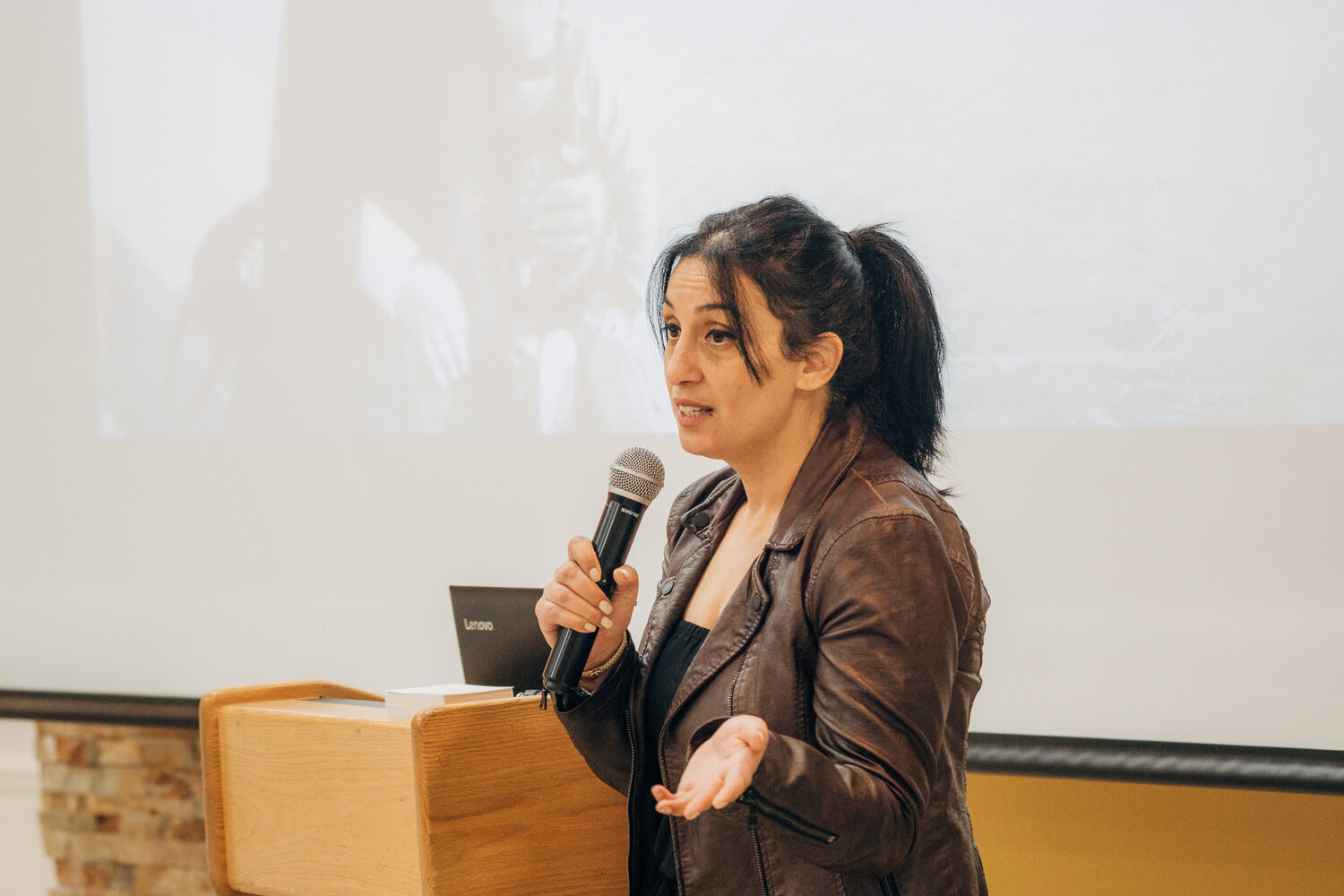From refugee to architect, Rania draws upon her own story of displacement to design safe housing for her fellow refugees and underserved people
Rania Qawasma is an American architect, Palestine refugee, and former UNRWA beneficiary. She is a steering committee member of the UNRWA Alumni Association (USA) and is a contributing guest writer to the Voices of UNRWA blog, where she shared the role UNRWA played in her and her family’s lives.
My refugee story starts a few generations ago with the forcible uprooting of two families forced out of their homes in Ramleh and Jerusalem.
Rania’s UNRWA school photo, 1981
My grandmother was pregnant with my dad when they fled their home and shop in Ramleh. Finding refuge with family in Hebron, my grandmother gave birth to my father, only to be displaced once again to Egypt when my dad was a senior in high school.
My mom’s dad was only 14 when his family was forced out and lost their home in Jerusalem. They moved to the Gaza Strip, inconceivable now, given the brutal permit system dividing up Palestine and the restriction of movement within the occupied territory. Much like my other side of the family, my mother’s side faced multiple displacements in each generation, moving to Egypt where she was born, then to Libya, and finally to Hebron.
I was born in Libya, and lived my childhood between there and Jordan. In 1986, my family relocated to the West Bank where UNRWA provided us with humanitarian and social services. I attended UNRWA schools for two years while living with my aunt and grandparents in Hebron, as they were much better than the public schools. I continued to remain connected with UNRWA long after primary school, volunteering at various summer programs in between my years at college, and my family relied on UNRWA for healthcare services. My aunt worked for UNRWA as a primary school teacher in Al Fawar refugee camp in southern Hebron, the same school system that raised her.
“It was through UNRWA programs that I first learned civic and community engagement, and through UNRWA jobs, where I saw women, like my aunt, being empowered, and at UNRWA schools, where I sketched my first home. UNRWA has shaped me into the person I am today, and there are thousands of other Palestine refugees like me, who deserve access to these life-altering services and programs. Funding and supporting UNRWA gifts the world creative, empathic, innovative leaders who not only empower and serve their communities in Palestine but wherever they reside.”
Every day on my way to school, I walked in and out of Al Fawar refugee camp. There, I learned about my family’s story and how we and others lost our homes. It was in UNRWA classrooms and extracurricular programs where my understanding of social justice, equity, and civic work was shaped. This connection with UNRWA, and by extension, my people, has been something I’ve long cherished and am continuing to build now that I live in the United States.
Though I now live in the Pacific Northwest, I lived in Palestine during the formative years of my life, and it will always be home to me. I’ve always been fascinated by the stories we as Palestinians create of our homes, streets, villages, and places we share, and this sentiment has only been magnified given my family’s experience with displacement and narrative around what home looks like.
rania’s family through the generations
One childhood memory that always stuck with me was from my first trip to Jerusalem with my grandparents, aunt, and uncle. I remember Fairouz was playing on the radio and I hummed along as we watched the hills separating Jerusalem from the Mediterranean. While driving on the Hebron-Jerusalem highway and entering what is now known as West Jerusalem, I heard my grandfather enthusiastically shout, “look there’s our home!” Everyone in the car turned and saw the house, except me. I thought, “What house? Where? Why can’t we go there? Can we go back?” As I bombarded my grandparents with questions, they struggled to explain to me, a young child, the nuances of displacement and the reasons we were not allowed to return to their house. I don’t remember their answers. All that stayed with me is the devastating fact that I couldn’t see it.
“I design affordable housing and see it as my mission to help ensure all people have the right to a home, something that has been denied to countless Palestine refugees like myself. Whether in my local underserved neighborhoods in Washington state or my fellow displaced and underserved people elsewhere, I hope my work as an architect allows people to create a space to feel safe and secure. ”
The next morning, I went to school and told my UNRWA teacher Ms. Rasha what happened. She suggested that on the next trip I should tell my grandfather to let me know when we were getting close to the house and so when we pass by it, I would be prepared to take a mental photo of it. She gave me a sketchbook and a pencil to keep with me so that I could draw the features of the house before my memory started to fade.
We went on several trips that summer, and on each one I’d keenly focus on different details of the home. A few weeks after my first glance of the house, I had drawn the entire balcony, and by the end of the summer, I had an outline of our family’s home, complete with the ornate windows and doors, all the way down to the small details of the stone bricks along the facade.
The act of preserving the memory of her family’s home inspired Rania to become an architect
Rania’s grandfather’s home in Jerusalem
This started my fascination with buildings, their designs, and the way parts of people’s cultures and identity manifested in these structures. I started drawing not only my grandfather’s home but other buildings that I saw. None of us are allowed to step foot in or near my grandfather’s home, as it now belongs to an Israeli family, but I had preserved it’s exterior in my sketchbook that summer thanks to Ms. Rasha’s encouragement. Ultimately, I credit her and this experience to my decision to pursue architecture school.
Rania’s sketches
Now, years later, and many sketches later, I live in Seattle, Washington. I’m a community architect, and focus my work on social justice and equity. I design affordable housing and see it as my mission to help ensure all people have the right to a home, something that has been denied to countless Palestine refugees like myself. Whether in my local underserved neighborhoods in Washington state or my fellow displaced and underserved people elsewhere, I hope my work as an architect allows people to create a space to feel safe and secure.
Rania participating at various national events focusing on design and inclusion
It was through UNRWA programs that I first learned civic and community engagement, and through UNRWA jobs, where I saw women, like my aunt, being empowered, and at UNRWA schools, where I sketched my first home. UNRWA has shaped me into the person I am today, and there are thousands of other Palestine refugees like me, who deserve access to these life-altering services and programs. Funding and supporting UNRWA gifts the world creative, empathic, innovative leaders who not only empower and serve their communities in Palestine but wherever they reside.


